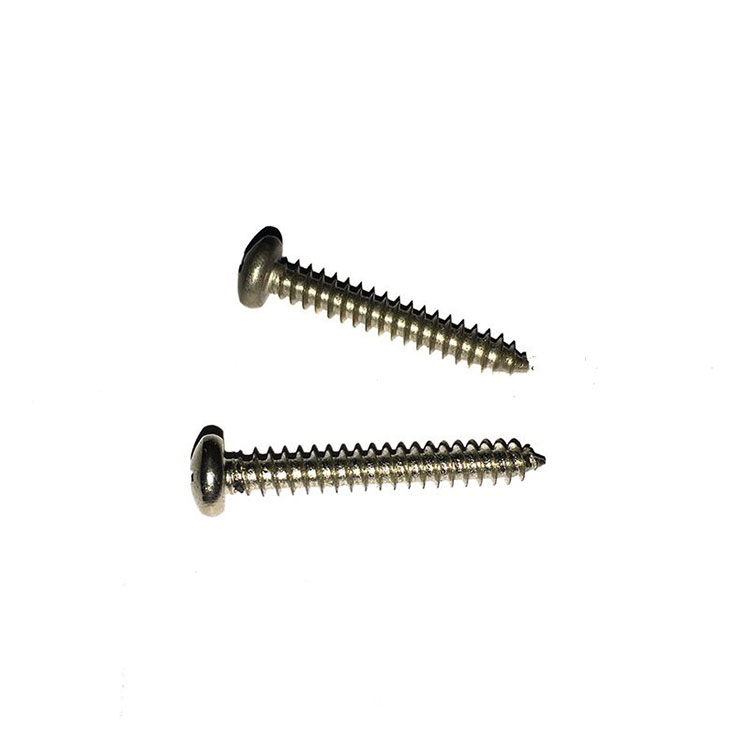What is the thread pitch of self-tapping screws?
2024-10-08

What materials can self-tapping screws be used on?
Self-tapping screws can be used on a wide range of materials, including wood, plastic, and metal. They are especially useful in applications where a pre-threaded hole is not possible or practical. Self-tapping screws for metal are designed with a sharp point and high helix angle to help them cut through the metal and form a thread.
What is the difference between self-tapping screws and self-drilling screws?
The main difference between self-tapping screws and self-drilling screws is that self-tapping screws require a pre-drilled hole, while self-drilling screws do not. Self-drilling screws have a drill bit tip that allows them to create their own hole as they are driven into the material. Self-tapping screws are often preferred for softer materials like wood and plastic, while self-drilling screws are better for harder materials like metal.
How is thread pitch measured in self-tapping screws?
The thread pitch of a self-tapping screw is measured by the distance between the threads. It is the number of threads per inch (TPI) or the distance between two adjacent threads in millimeters. Thread pitch affects how tightly a screw fits into a material and how much force is required to drive it in. It is an important consideration when choosing the right screw for a project.
What is the thread pitch of self-tapping screws?
The thread pitch of self-tapping screws can vary depending on the size and type of screw. Generally, thread pitch ranges from about 0.5 mm to 3.5 mm. It is important to choose the correct thread pitch for the intended application, as using the wrong pitch can result in a loose or tight fit that may compromise the strength of the connection.
In conclusion, self-tapping screws are a versatile type of fastener that can be used in a variety of applications. Choosing the right size, type, and thread pitch of the screw is important to ensure the strength and durability of the connection. If you need more information on self-tapping screws or other types of fasteners, please contact Ningbo Gangtong Zheli Fasteners Co.,Ltd. at ethan@gtzl-cn.com or visit their website at https://www.gtzlfastener.com.
Research Papers:
1. Johnson, M.H. (2010). "Effect of thread pitch on the pull-out strength of self-tapping screws." Journal of Materials Science, 45(6), 1502-1508.
2. Smith, J.P. (2012). "Influence of drill bit tip angle on the performance of self-drilling screws." International Journal of Mechanical Engineering, 4(3), 41-48.
3. Wang, Y. & Li, Z. (2015). "Experimental investigation of the effect of screw size on the tensile strength of wood." Wood Science and Technology, 49(3), 509-515.
4. Kim, S.H. & Ryu, H.S. (2018). "Finite element analysis of the stress distribution in self-tapping screws for metal." Journal of Mechanical Science and Technology, 32(4), 1787-1793.
5. Gonzalez, M.F. & Groover, M.P. (2020). "Characterization of the thread profile of self-tapping screws using digital microscopy." Surface Topography: Metrology and Properties, 8(3), 035011.
6. Lee, S.K. & Park, H.K. (2017). "Effect of thread geometry on the performance of self-tapping screws for composite materials." Composites Part B: Engineering, 115, 212-220.
7. Chen, Y. & Cheng, Q. (2013). "Analytical and experimental study on the torsional capacity of self-tapping screws." Journal of Constructional Steel Research, 86, 26-33.
8. Zhang, H. & Gao, H. (2016). "Investigation of the fatigue behavior of self-tapping screws under cyclic loading." Engineering Failure Analysis, 59, 392-402.
9. Chao, L. & Zhang, X. (2011). "Study of the performance of self-tapping screws in sheet metal." Journal of Applied Mechanics and Materials, 66-68, 966-971.
10. Kang, Y. & Lee, J.H. (2014). "Effect of thread diameter on the push-out resistance of self-tapping screws in concrete." Construction and Building Materials, 50, 722-729.


